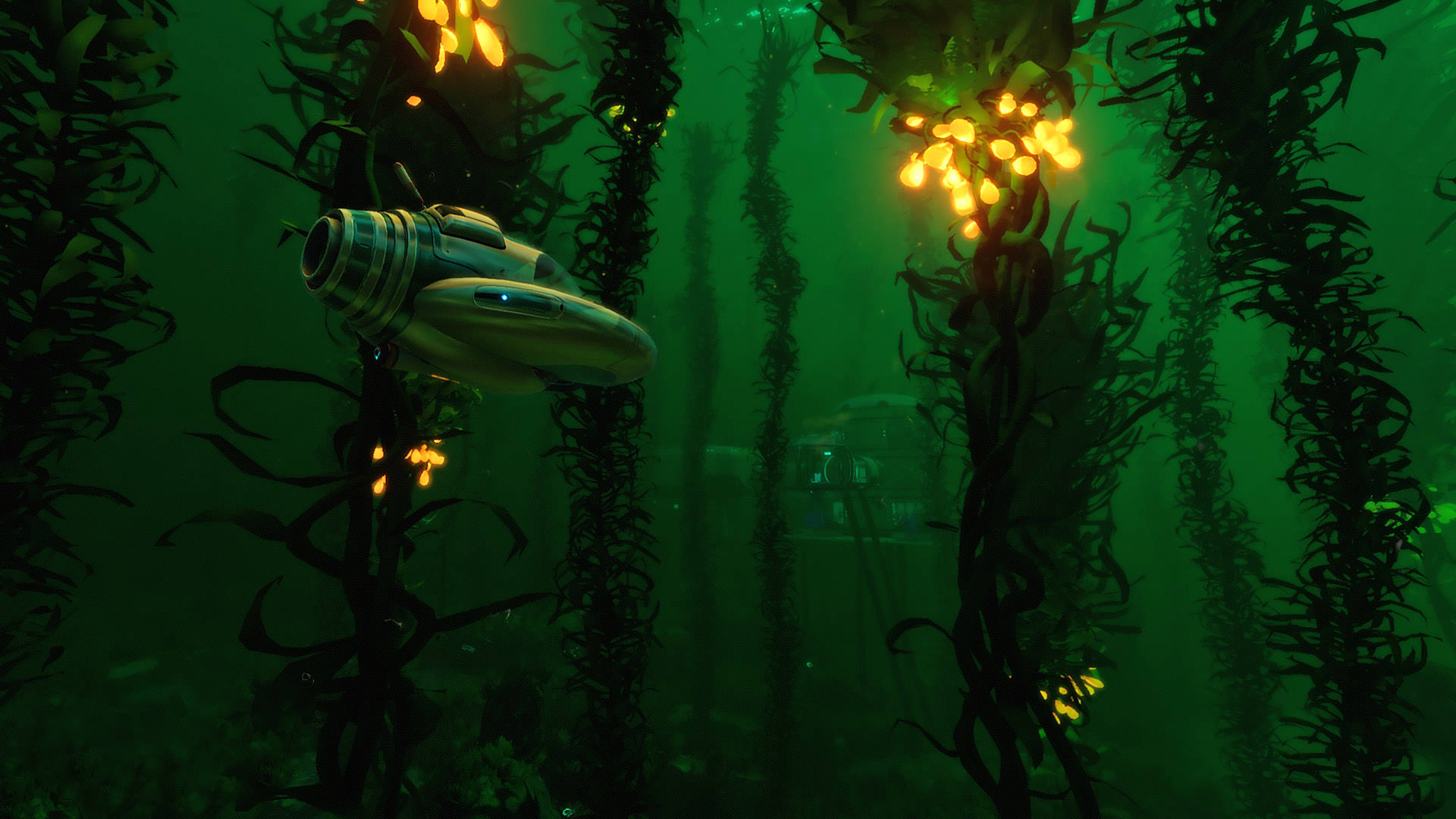
Biomes
There are many different underwater biomes within the world of Subnautica. Each one is breathtakingly beautiful and dangerous in their own ways. Some are easier to access (and peacefully maneuver through) than others. Though this list doesn’t provide every single possible biome a player can encounter, they’re some of the most unique.



Safe Shallows
The safe shallows are where the player finds themselves at the very beginning of the game. Your lifepod has landed here, and until you are able to venture further into deeper waters, they will be your home. The safe shallows harbor an abundance of resources in fish to catch and scrap metal to find, but don’t let the name fool you—though they are the safest underwater biome, that doesn’t mean they’re all safe. There are tunnels under the surface that are all too easy to get lost in, and creatures that can explode or shoot toxic bulbs at you if you get too close. But don’t worry—once you see what the rest of 4546B has to offer, the dangers of the safe shallows will feel like a cakewalk.
Kelp Forest
You will know when you’ve stumbled across a kelp forest, because the entire world will turn green. The kelp forest is a lush, diverse ecosystem of tall, thick kelp. Many resources can be found in this biome, from food, to blueprints, to lost castaways. The forests will probably be the first place a player can really get their feet wet and expose themselves to deeper waters and more dangerous creatures.
Crash Zone
"Lifeform readings in this region are sparse. The Aurora's radioactive fallout will have devastating effects on the alien ecosystem if not contained within the next 24 hours" - PDA when first entering the crash zone
The crash one is where the Aurora crashed into the planet’s surface. The biome is a series of sandy hills formed by the ship’s great hull, and the water is murky and difficult to see through from all the soil kicked up in the crash. When in the biome, the world shakes, and rumbles from the Aurora’s damaged body echoes all around you. But that isn’t the scariest part of the crash zone; reaper leviathans can be encountered here, and thanks to the murky water granting them coverage and the rumbles from the Aurora, they might not be detected until it’s too late.



Blood Kelp
“This ecological biome matches 7 of the 9 preconditions for stimulating terror in humans.” – PDA when first visiting the blood kelp
The blood kelp is considered one of the scariest areas of the game. One of the scary things about this biome is that it’s easily reachable from the surface, but it goes incredibly deep, and you lose all sunlight very quickly upon entering. The soundtrack certainly doesn’t help: the haunting voice that begins once you descend into this environment only puts the player even more on edge. The blood kelp zone is a great example of why Subnautica is so scary: it’s not what you know is out there, it’s what could be out there that you don’t know about yet.
Dunes
“Detecting multiple leviathan-class lifeforms in the region. Are you certain whatever you are doing is worth it?” – PDA when first visiting the dunes
Subnautica can be completed without ever visiting the dunes, which is fortunate for more skittish players, since the dunes harbor several of the most dangerous species on the surface. The dunes are a large biome, and as the name implies, are characterized by miles of rolling hills and valleys. The reason many players find this place so intimidating is because of the many reaper leviathans that call the dunes home. The reapers patrol even the shallow waters of this ecosystem, which means that venturing into this large biome means taking your life in your own hands.
Deep Grand Reef
The deep grand reef is where things begin to unravel. You are now deep enough that the sun doesn’t reach the ocean floor, and the only sources of light come from bulbous plants that drift up from the sand. More aggressive creatures reside here, many of them down within the many caves that lead only deeper into the heart of 4546B.



Lost River
Deep under the surface lies the lost river, a twisting, winding maze of rock and bone. This biome is characterized by the acidic river that runs through it and the gargantuan bones of long-extinct creatures. It is here where the story of Subnautica begins to unfold, and you can see just how deep (literally and metaphorically) everything goes here. This is also where the game ups the danger, as it is where the Kharaa bacterium finally catches up to you. It’s like the game is finally reminding you: you’re running out of time.
Lava Lakes
Even deeper than the lost river are the lava lakes. Over 2 kilometers below sea level, the lava lakes are great caves of boiling water, magma, and fire-spitting fauna. It may be much more open than the lost river, but it is still a maze, and one with aggressive creatures waiting at every turn. One must stay vigilant when venturing down here: you don’t know if it’ll be the blistering heat that takes you out, or the monsters waiting within it.Crater's Edge (Dead Zone)
Warning: entering ecological dead zone" – PDA when first entering the crater's edge
Beyond the 2 kilometers of accessible ocean lies a dark and vast void. If you swim too far in one direction, eventually, you will hit nothing but open water. Most games have some sort of mechanic like this to keep players within the playable map, but there are few games that have done something as daunting as this. Endless miles of dark sea inhabited by adult ghost leviathans isn’t the smartest place to linger. For anyone curious, it is definitely worth at least sneaking a peak. Just don’t stay there too long..